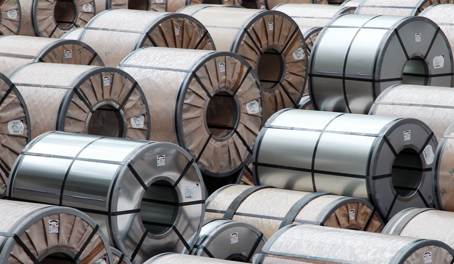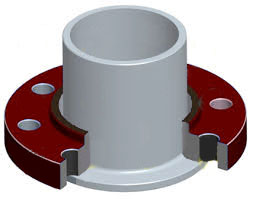As a products that hot-rolls steel plate 2mm or thinner at room temperature, cold rolled steel plate is also called 'the flagship of steel products,' since it is the most difficult to manufacture of all steel products and requires high technology. Thin and with beautiful surface, cold rolled steel plate is used as outer plate and interior material of automobiles, home electronics, construction materials, etc. that are closely related to our lives, Anita Steel & metals possesses an annual cold rolled steel plate production capacity of ten thousand tons and is lately striving to develop high-value-added cold rolled steel plates such as ultra-high strength steel plate in step with the worldwide trend for lightweight vehicles

Pickled & Oiled Steel Plate
The surface of steel plate is treated with oil to prevent oxidation after iron oxide and impurities attached to the surface of hot rolled steel plate are removed with hydrochloric acid, etc. It is mostly used for automobiles, construction materials, and pipe materials.
- Major Products SPHE, SPHD, SPHC, SAPH310, SAPH370, SAPH400, SAPH440, SPFH540, SPFH590, JIS-SPHC, JIS-SPHD, JIS-SPHE, ASTM A1011, EN DD11, DD12
With zinc plated on the surface of hot rolled steel plate, the product boasts outstanding corrosion resistance. Resistant to corrosion, it is used as construction and industrial materials as for fences, containers, guard rails, and agricultural pipes.
- Major Products SGHC, SGH340, SGH370, SGH400, SGH440, SGH490, JIS-SGHC, JIS-SGH340, JIS-SGH400, JIS-SGH440, JIS-SGH490
- Major Products SGHC, SGH340, SGH370, SGH400, SGH440, SGH490, JIS-SGHC, JIS-SGH340, JIS-SGH400, JIS-SGH440, JIS-SGH490
As electro-galvanized cold rolled or hot rolled steel plate, the product demonstrates outstanding corrosion resistance and processability. It is mostly used as material for home electronics such as LCD, TV, DVD player, copy machine, and refrigerator.
- Major Products SECC, SECD, SECE, SECEN, SEFC340, SEFC390, SECUD, JIS-SECC, JIS-SECD, JIS-SECEN, EN DC01+ZE, EN DC03+ZE, EN DC04+ZE
- Major Products SECC, SECD, SECE, SECEN, SEFC340, SEFC390, SECUD, JIS-SECC, JIS-SECD, JIS-SECEN, EN DC01+ZE, EN DC03+ZE, EN DC04+ZE
Galvanized steel has outstanding corrosion resistance as a galvanized cold rolled steel plate and is mostly used for home electronics, construction materials, and internal parts of automobiles. Galva-annealed steel has outstanding weldability and processability as a steel plate that has annealed the zinc plate of cold rolled steel plate and is mostly used for inner/outer plates of automobiles.
- Major Products SGCC, SGCD, SGCD1, SGCD2, SGCD3, SGC340, SGC370, SGC400, SGC440, SGC570, JIS-SGCC, JIS-SGCD, ASTM A653, EN DX51D+Z, EN DX52D+Z, EN DX54D+Z, SGACC, SGACD, SGACEN, SGACUD, SGARC340, SGARC440, SGAFC590
- Major Products SGCC, SGCD, SGCD1, SGCD2, SGCD3, SGC340, SGC370, SGC400, SGC440, SGC570, JIS-SGCC, JIS-SGCD, ASTM A653, EN DX51D+Z, EN DX52D+Z, EN DX54D+Z, SGACC, SGACD, SGACEN, SGACUD, SGARC340, SGARC440, SGAFC590
Color Coated Steel Plate
With cold rolled steel plate, galvanized steel, aluminum, stainless steel, etc. coated with various colors, the product boats beautiful color and surface and is mostly used for home electronics, construction materials, assembling metals, etc.
- Major Products CGCC, EN DX51D+Z, EN S220GD+Z, EN S280GD+Z, EN S350G
- Major Products CGCC, EN DX51D+Z, EN S220GD+Z, EN S280GD+Z, EN S350G


 Is its good for very expensive materials like
Is its good for very expensive materials like 
